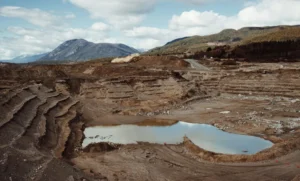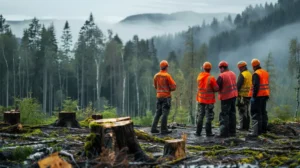Ecological succession is the natural process through which ecosystems change and develop over time. There are two types of succession: primary and secondary. Both occur in response to environmental changes, but they follow different paths.
The central question we’ll address here is: Why does secondary succession happen faster than primary succession? In short, it’s because secondary succession starts with soil already in place and residues of past life, while primary succession begins from scratch. This blog will explain the key reasons behind this difference and the factors that speed up secondary succession.

Understanding Primary and Secondary Succession
What is Primary Succession?
Primary succession begins in areas where there is no soil, such as a bare rock after a volcanic eruption or a retreating glacier. Pioneer species like lichens and mosses are the first species to colonize a lifeless environment. These species break down rock and help form soil, which makes the way for more complex plant life over time.
Primary succession is slow because it takes a long time for soil to be formed and support more advanced species of plants. This timeline shows the gradual buildup of organic matter and nutrients, which are required to establish an ecosystem.
What is Secondary Succession?
Secondary succession occurs when the ecosystem has been disturbed, but soil remains. It can be after a fire, flood, or human activity. Since seeds, roots, and some plant material usually survive in the soil and can regrow as conditions stabilize, there is no need to wait for soil formation, unlike primary succession.
This does not have to start from scratch, and therefore, secondary succession is much faster than primary succession. Recovery is faster in the presence of pre-existing resources and plant residues.
Key Factors That Make Secondary Succession Faster

1. Presence of Existing Soil
One of the main reasons secondary succession is quicker is that soil is already present. Soil in these environments is often rich in nutrients, which allows plants to establish more rapidly. In primary vs. secondary succession, the soil formation stage is skipped, leading to faster plant growth in secondary succession.
In primary succession, soil has to be created from bare rock, which takes considerable time. This delay in soil formation is a key reason why primary succession proceeds at a slower pace.
2. Seed Bank and Vegetative Residues
Secondary succession benefits from a seed bank in the soil. Even after a disturbance, seeds, roots, and plant fragments often survive. These remnants can quickly germinate and grow once conditions improve.
In primary succession, there are no such remnants to jump-start the process, which is why recovery takes longer. The quick germination of seeds in secondary succession speeds up the entire process of ecosystem recovery.
3. Rapid Colonization by Pioneer Species
Pioneer species in secondary succession are usually fast-growing plants like grasses and shrubs. These plants are well-suited to disturbed environments and can quickly colonize the area because conditions are favorable.
In primary succession, however, pioneer species have to deal with harsher environments like bare rock. The process of colonization is slower because the conditions are less favorable.
4. Less Initial Resource Competition
Secondary succession receives the needed resources from existing soil to support plant life. Competition for available resources is relatively low during the early stages because the enriched soil enables rapid growth in plant species.
Primary succession, on the other hand, occurs when there is a blank landscape with few resources to promote the settlement of organisms.
5. Nutrient Cycling from Previous Vegetation
Secondary succession benefits from the nutrients left behind by previous plant life. When plants die, they decompose and return nutrients to the soil, improving the conditions for new plant growth. This nutrient cycling speeds up the recovery process.
In primary succession, nutrient cycling takes much longer because it requires the gathering of organic matter over time. Without this nutrient boost, plant growth is slower.
Examples of Secondary Succession vs Primary Succession
Secondary succession can be seen in areas recovering from forest fires or abandoned agricultural fields. For example, after a forest fire, grasses and shrubs often regrow within a few years, followed by trees as the ecosystem recovers.
Primary succession, on the other hand, can be observed in places such as volcanic islands or areas left barren by glacier retreat. These environments take much longer to develop because they start without soil or any plant life.
Ecological succession differences between these two types of succession show how ecosystems recover in distinct ways based on their starting conditions.
Conclusion
Secondary succession speed is faster than primary succession due to several key factors. The presence of existing soil, the seed bank, rapid colonization by pioneer species, reduced competition for resources, and nutrient cycling all contribute to quicker recovery. These factors allow ecosystems to rebound more quickly after disturbances.
Understanding these differences helps us appreciate how nature rebuilds itself and the role succession plays in maintaining ecosystem health.




